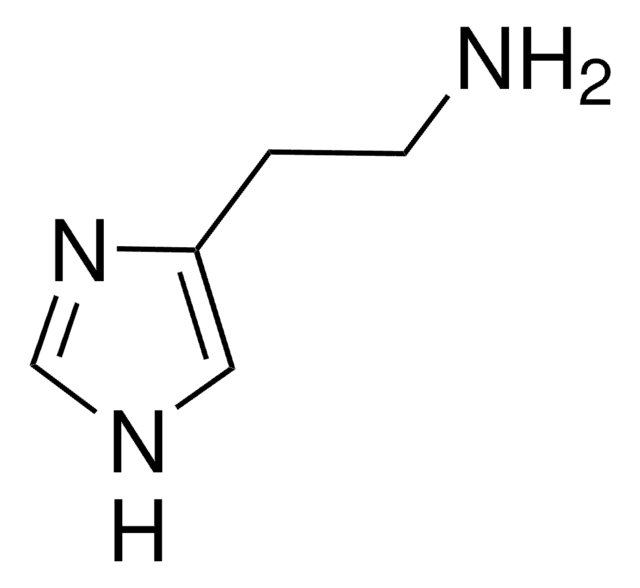51799
1,4-Diaminobutano
analytical standard
Sinónimos:
1,4-Butanodiamina, Putrescina, Tetrametilenodiamina
About This Item
Productos recomendados
grade
analytical standard
Quality Level
assay
≥98.5% (GC)
shelf life
limited shelf life, expiry date on the label
expl. lim.
9.08 %
technique(s)
HPLC: suitable
gas chromatography (GC): suitable
refractive index
n20/D 1.457 (lit.)
bp
158-160 °C (lit.)
mp
25-28 °C (lit.)
density
0.877 g/mL at 25 °C (lit.)
application(s)
cleaning products
cosmetics
flavors and fragrances
food and beverages
personal care
format
neat
storage temp.
2-8°C
SMILES string
NCCCCN
InChI
1S/C4H12N2/c5-3-1-2-4-6/h1-6H2
InChI key
KIDHWZJUCRJVML-UHFFFAOYSA-N
¿Está buscando productos similares? Visita Guía de comparación de productos
Categorías relacionadas
Application
- Putrescine in food analysis: A study demonstrated a novel method for the selective extraction of dietary polyamines, including putrescine, from chicken breast, utilizing lab-on-a-chip electromembrane and dispersive liquid-liquid microextraction techniques for enhanced food analysis (Barzegar et al., 2024).
- Putrescine in biochemical analysis: The application of Electrostatic Repulsion Hydrophilic Interaction Liquid Chromatography (ERLIC) for the quantitative analysis of polyamines such as putrescine showcases its importance in biochemical assays, providing precise measurement tools for research and development (Dörfel et al., 2024).
Other Notes
Recommended products
signalword
Danger
hcodes
Hazard Classifications
Acute Tox. 2 Inhalation - Acute Tox. 3 Dermal - Acute Tox. 4 Oral - Eye Dam. 1 - Met. Corr. 1 - Skin Corr. 1B
Storage Class
6.1B - Non-combustible acute toxic Cat. 1 and 2 / very toxic hazardous materials
wgk_germany
WGK 1
flash_point_f
113.0 °F - closed cup
flash_point_c
45 °C - closed cup
Elija entre una de las versiones más recientes:
¿Ya tiene este producto?
Encuentre la documentación para los productos que ha comprado recientemente en la Biblioteca de documentos.
Los clientes también vieron
Protocolos
HPLC Analysis of Biogenic Amines on Ascentis® RP-Amide
Nuestro equipo de científicos tiene experiencia en todas las áreas de investigación: Ciencias de la vida, Ciencia de los materiales, Síntesis química, Cromatografía, Analítica y muchas otras.
Póngase en contacto con el Servicio técnico







